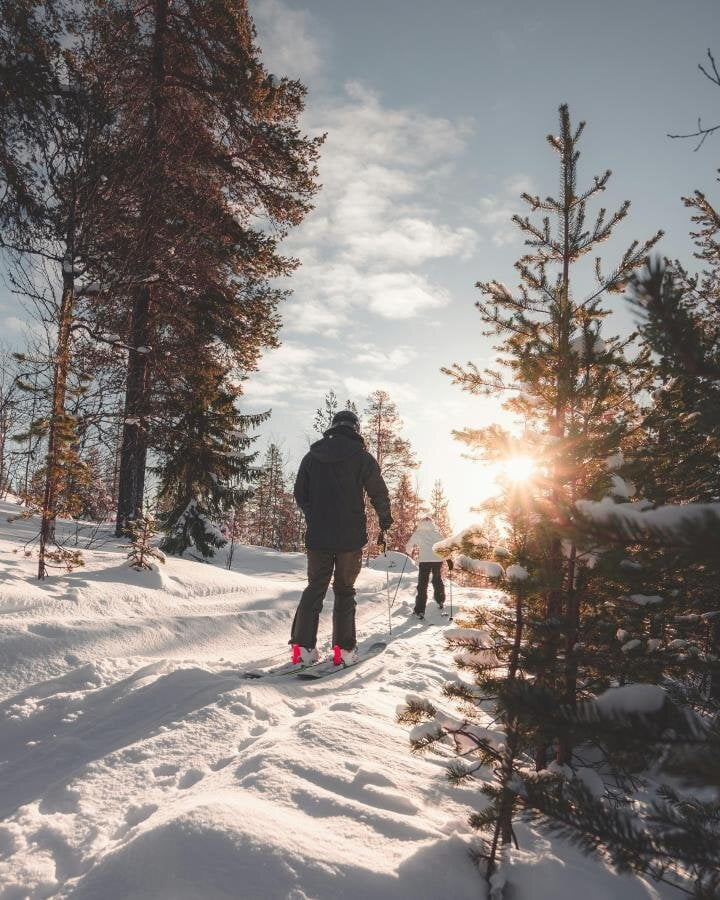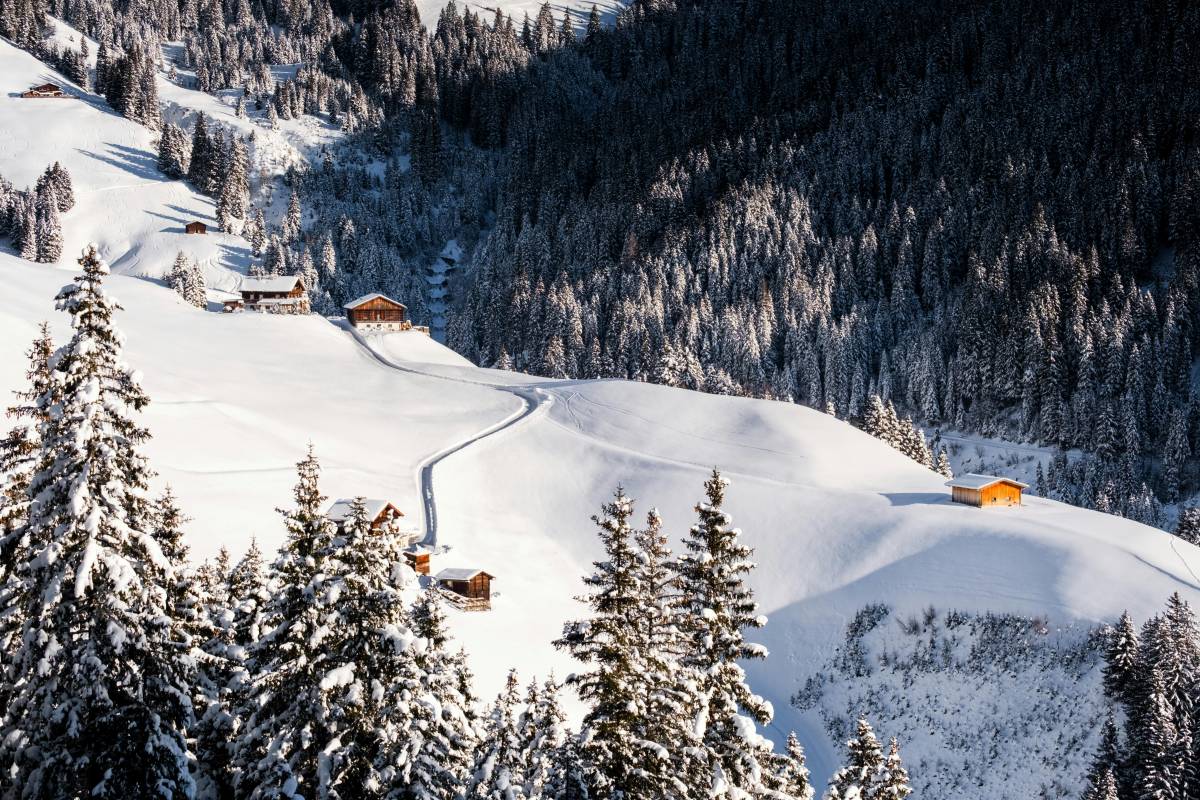While you unsuspectingly slide down the slope with your skis or snowboard and enjoy the beautiful nature in the meantime, chemicals, such as PFAS, pass through the ski wax unnoticed, into the mountains. PFAS! Yes, they are those ‘forever chemicals’ that are harmful to humans and the environment. Why these are in ski wax and whether there are also sustainable ski waxes, you can read in this article.
PFAS in ski wax
Anyone who has ever been on winter sports knows that skis and snowboards regularly need a layer of wax on the underside to keep them gliding properly. But did you also know that those ski waxes often contain chemicals, such as PFAS, that are not good for the environment and probably not good for our health either?
What are PFAS?
The abbreviation PFAS stands for poly- and perfluoroalkyl substances. These are about six thousand different chemicals. PFAS are very useful because they are water-, grease- and dirt-repellent. That is why they are used in all kinds of products such as pans, make-up, rainwear and thus also in ski wax. The problem is that PFAS like PFOA, PFOS and GenX do not decompose and accumulate in the environment and the human body. Hence the name ‘’forever chemicals'. And we would like to avoid that because PFAS can have harmful effects on the immune system, reproduction and can be carcinogenic. In this article, you can read more about how to avoid PFAS in everyday life. Now let's see if we can also find good ski wax without junk like PFAS.

Winter sports without leaving a trace of PFAS, it can be done by paying attention to your ski wax!
Is ski wax containing PFAS already banned?
While writing this article, I came across some good news: from the 2023/ 2024 winter season, the International Ski and Snowboard Federation (FIS) will ban ski wax containing PFAS. This means that athletes competing in ski and snowboard competitions organised by the FIS will no longer be allowed to use wax with PFAS. This should be strictly controlled, as ski wax without PFAS is slightly slower, especially on wet snow. The hobby skier is unlikely to notice much difference, but during a competition it can make that small difference. So do hobby skiers no longer have to worry about toxic wax? Unfortunately, yes, because ski waxes containing PFAS are still just available in shops, and ski wax without PFAS may also contain many other unwanted chemicals.
How to recognise ski wax containing PFAS
So there are not PFAS in every ski wax. Usually PFAS are added to racing wax and to wax for higher temperatures, so that you can still glide well on wet snow. You can recognise ski wax with PFAS quite easily: it will say ‘fluorine’ on the packaging. So you want a ski wax that is ‘non-fluor’. But is non-fluor ski wax then automatically natural and sustainable? Unfortunately no. There are other substances that are harmful to the environment and wax manufacturers do not like to reveal what is in their ski wax. Nor is it mandatory to put this on the packaging.


Left: this wax contains fluorine (PFAS) and so you want to avoid it. Right: at least this wax does not contain PFAS (non-fluoro). What other (harmful) substances it contains is not mentioned on the packaging.
Wax your skis or snowboard yourself with durable ski wax
There are different types of wax for sale: liquid wax, sprays and wax blocks that you put on your skis with a kind of iron. The last option works best. This is because the heat really soaks the wax into your skis and you will enjoy it the longest. Liquid wax or a spray that you apply to your skis without heat will be skied off again after a few runs and thus end up in nature faster. Have you never waxed your skis yourself? In this video you can see how it works. You will need some extra equipment for this, such as a scraper, brush and waxing iron: but with a bit of luck you can borrow these or find second-hand ones. Instead of a special waxing iron, you can also take an old iron with a smooth surface. I've been doing this for years and it works fine. I found mine for a few euros at the thrift store. I also don't need special wipes to clean my skis: an old pair of tights works just as well!
Here's how to find sustainable ski wax
When you're ready to wax your skis yourself, of course you'll want to do so with sustainable wax. Because manufacturers are not required to list the ingredients of their wax, it is difficult to quickly find out which wax is sustainable. A non-fluor wax contains no PFAS, but that doesn't say it all. Which is fine: wax that is biodegradable and made from natural ingredients. We don't know then whether the ingredients are also sustainably sourced, but it is a good first step. The most sustainable wax I could find at the moment is Holmenkol's natural ski wax. This is because it is not only biodegradable, but also carries the Nordic Swan Ecolabel.


Leave less toxic traces in nature by waxing your skis yourself with durable ski wax. You will need some equipment for this, but it does not have to be all new by any means.
Getting your skis or snowboard waxed at ski rental
If you have rental skis or find it too much of a hassle to wax your skis yourself, you can of course have a professional do it. At ski rental you will regularly see waxing machines that work quickly and efficiently. However, it is important here that the wax is applied warm, otherwise it will come off much faster while skiing. The most accurate method is to apply the wax manually with a wax iron. What kind of wax is used at ski hire, you obviously don't know. I think mainly wax without PFAS is used, as it is often cheaper, but what other chemicals are in it remains a mystery. If you want to be completely sure, you can always bring your own eco wax. You might even give them a good idea.
Will you choose sustainable ski wax from now on?
Do all ski waxes contain PFAS? No, and you can easily recognise this by the word ‘fluorine’ on the packaging. Unfortunately, this does not automatically mean that wax without fluorine, aka PFAS, is durable. It is a big mystery what wax manufacturers put in their ski waxes. Take matters into your own hands and choose a biodegradable wax, preferably with a label. That way, you can slide down the slopes with peace of mind.
More sustainable tips from thegreenlist.nl
- Want to take a more sustainable approach to not just your ski wax but the whole winter sport: then quickly read this article.
- Do some good for nature at home too: helping birds through the winter.
- Winter is the ideal time to do your vegetable garden planning. We help you on your way.
Sources: RIVM, Milieu Centraal, winter sports live, FIS, SRF, APA, pronatura. Photo credits: PhotoMIX Company (main image), Kirsten Marit Schoner, skiers in forest: Gustav Lundborg (Pexels), skis downhill: Alex Moliski (Unsplash).












